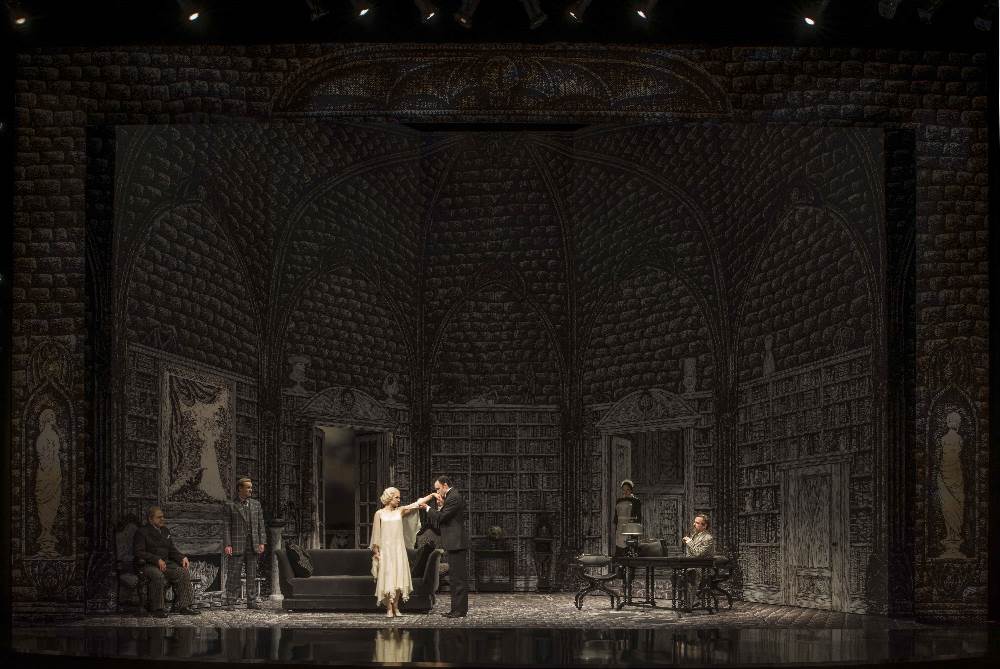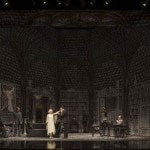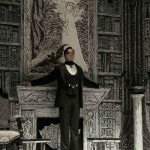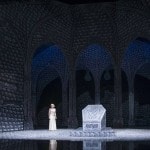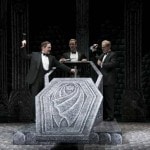Every month, American Theatre goes behind-the-scenes on the design process of one particular production, getting into the heads of the creative team. This month’s contender: Dracula at Alley Theatre in Houston.
Edward Gorey—whose pen-and-ink drawings regularly mixed the macabre with the ridiculous—was the rare visual artist who forayed into theatre design, winning a Tony Award for his work on the 1977 Broadway production of Dracula, for which he designed the costumes and 30-foot-high set. Being Gorey fans themselves, the creative team at the Alley Theatre decided to resurrect his designs for their version of Dracula.
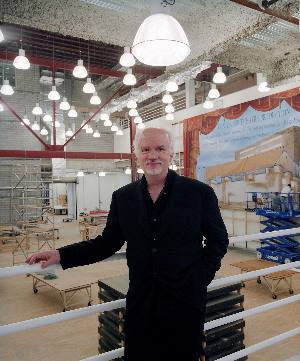
Gregory Boyd, DIRECTION: I was acting in a production with Frank Langella [who played Dracula on Broadway] up at Williamstown Theatre Festival. Gorey brought the designs in [for Dracula], and I was amazed by them. I was a big fan of all versions of the Dracula story, and this was a completely different way to look at what we know. I’ll tell you what: When the curtain goes up on our production, you’ll realize from moment one that the good people have lost. The first set is very grand, this sort of Gothic library in an English house—but the more closely you look, the more you realize that it’s totally infected with whatever Dracula brought to this play: namely, bats. Everywhere in the room are bats, hidden in the architecture, hidden in the pattern of the carpet, hidden everywhere. Dracula’s already taken over the world—that’s what the designer is conveying as soon as the curtain goes up.
Gorey is telling a story visually in the way the set penetrates the story. And he does it with great wit and panache. It has the most joy in it of any scenic design I’ve ever seen. It’s not what anybody thinks of as Dracula when they come in, and it’s what everyone thinks Dracula should be when they leave.
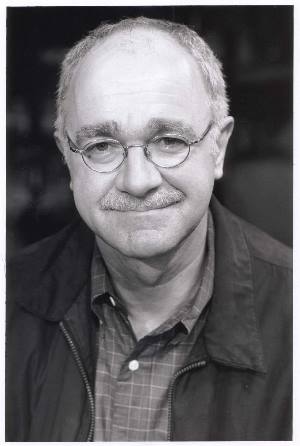
Hugh Landwehr, SCENIC COORDINATION: I’ve been an Edward Gorey fan since I was 13. As you investigate and reconstruct his decision-making process, you learn to follow what must have been Gorey’s logic. The scenery was basically 19th century in style; it was entirely flat. I suppressed a lot of my own instinct for three-dimensionality. There are a couple of places where Gorey did three-dimensional things, like the mantelpiece in the first act, but when it got around to things like bookshelves and door casing, it was all flat. You had to be careful not to violate that idea in order to stay true to what he had created.
The major set work was done by my assistant Anshuman Bhatia, who is a Photoshop whiz, and he was able to take all of this raw material and make it coalesce into elevations, which we then digitally printed in Houston. Gorey’s lines were exactly reproduced for the Alley. The original production in 1977 was entirely hand-painted by scenic artists. If you’ve seen Gorey’s stuff, you know it’s intensely cross-hatched and full of hand detail, so I can’t imagine what it would be like to paint it today!
Dracula, adapted by John L. Balderston and Hamilton Deane from Bram Stoker’s novel, ran at the Alley Theatre in Houston Oct. 3–Nov. 2 under Gregory Boyd’s direction. The production featured scenic and costume design by Edward Gorey, scenic coordination by Hugh Landwehr, costume coordination by Tricia Barsamian, lighting design by David Lander, sound design by Rob Milburn and Michael Bodeen, choreography by Peter Pucci, dialect coaching by Pamela Prather, assistant direction by Brandon Weinbrenner, stage management by Christa Bean, and assistant stage management by Brett Anders and Rebecca R. D. Hamlin.

